Radio2Space team completed the installation of a new SPIDER 500A radio telescope in Sharjah Center for Astronomy & Space Sciences, close to Dubai in the United Arabic Emirates and now it’s time for the first light. SPIDER 500A is a 5 meter radio telescope that, thanks to the large antenna and the specifically designed radio astronomy receiver, offers a very high sensitivity. We decided to capture data from Orion A, the Orion Nebula (M42) that emits also radio waves at the 1420 MHz frequency (flux 490 Jy) recorded by the radio telescope.
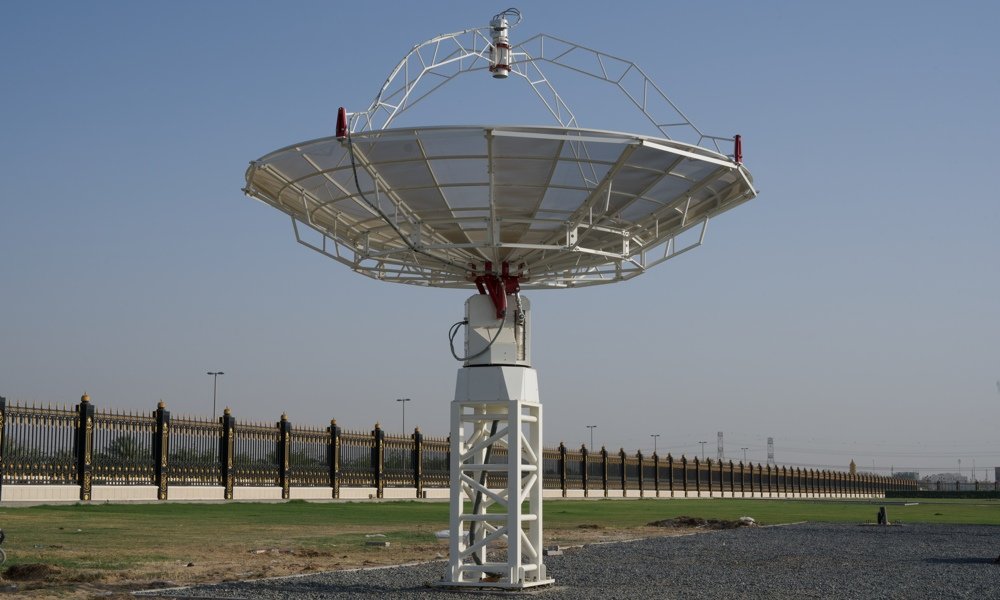
Orion A mapped with the SPIDER 500A radio telescope in Sharjah: the SPIDER 500A radio telescope used to map Orion A.
Orion A (also known in astronomy as M42) is 1,500 light years from Earth and it shines because it is heated by ultraviolet radiation from young stars called ‘Trapezium’ at the center of the nebula itself. These stars heat the surrounding gas generating radio waves. In the picture below, Unicorn and Orion constellations recorded by the 25 meter diameter radio telescope in Stockert, Germany (From the book: Radioastronomy, introduction to invisible sky. Courtesy: Patricia Reich and Wolfgang Reich , Max-Planck-Institut für Radioastronomie).
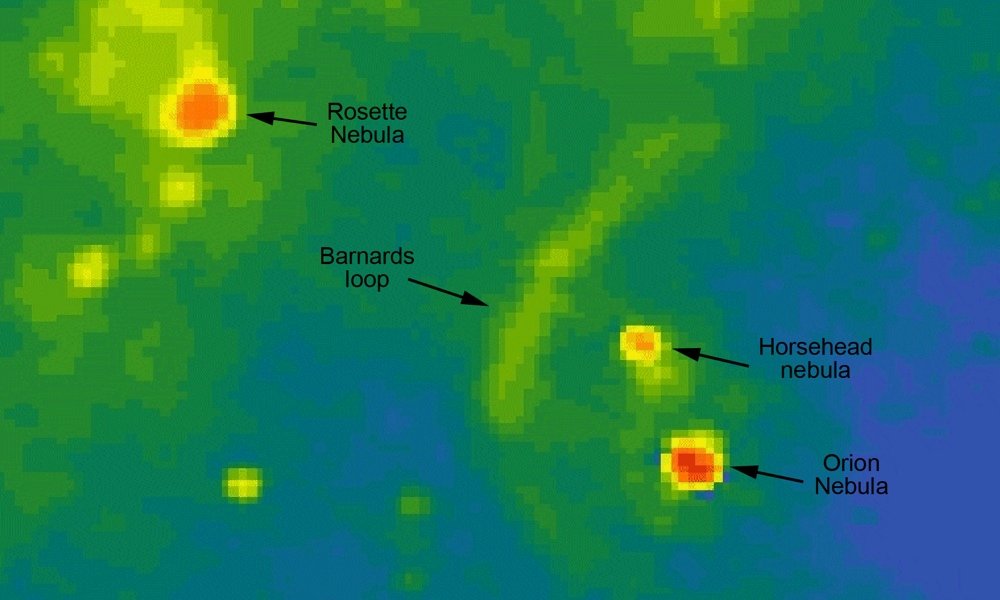
Unicorn and Orion constellations recorded by the 25 meter diameter radio telescope in Stockert, Germany (From the book: Radioastronomy, introduction to invisible sky. Courtesy: Patricia Reich and Wolfgang Reich , Max-Planck-Institut für Radioastronomie).
The SPIDER 500A radio telescope in Sharjah Center for Astronomy & Space Sciences is controlled from a control room near the radio telescope. Here the H142-One receiver is installed, together with the antenna control and power unit, and everything is connected to a computer running the RadioUniversePRO software to control the radio telescope, capture and process data. In the early afternoon, Radio2Space team together with Professor Ilias Fernini (SCASS Professor of Physics and Astronomy) and Issam S. Abujami (SCASS IT & System Specialist) aligned the radio telescope to the sky and pointed Orion A.
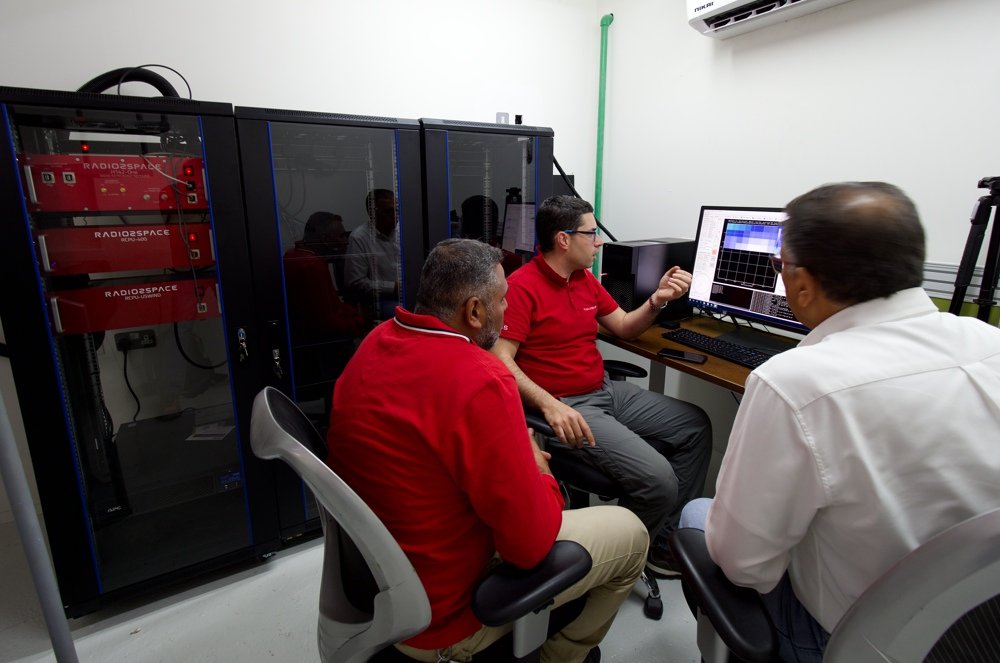
Orion A mapped with the SPIDER 500A radio telescope in Sharjah: in the control room during acquisition. On the left, H142-One receiver with data and power unit for SPIDER 500A.
RadioUniversePRO software allows to precisely define all the parameters requested for an automated radiomap acquisition like the map dimension in degrees, the resolution and the integration time for every pixel. For this first light it was chosen to record a 5×5° map with 0,7° resolution and 30 seconds integration for every pixel. After around 1.5 hours, the radio map appeared on the screen, highlighting Orion A with the peak of emission of the Orion Nebula at 1420 MHz. By using the proper feature of RadioUniversePRO we also selected to create the contour level lines that have been overlayered to the map that you can see in the picture below.
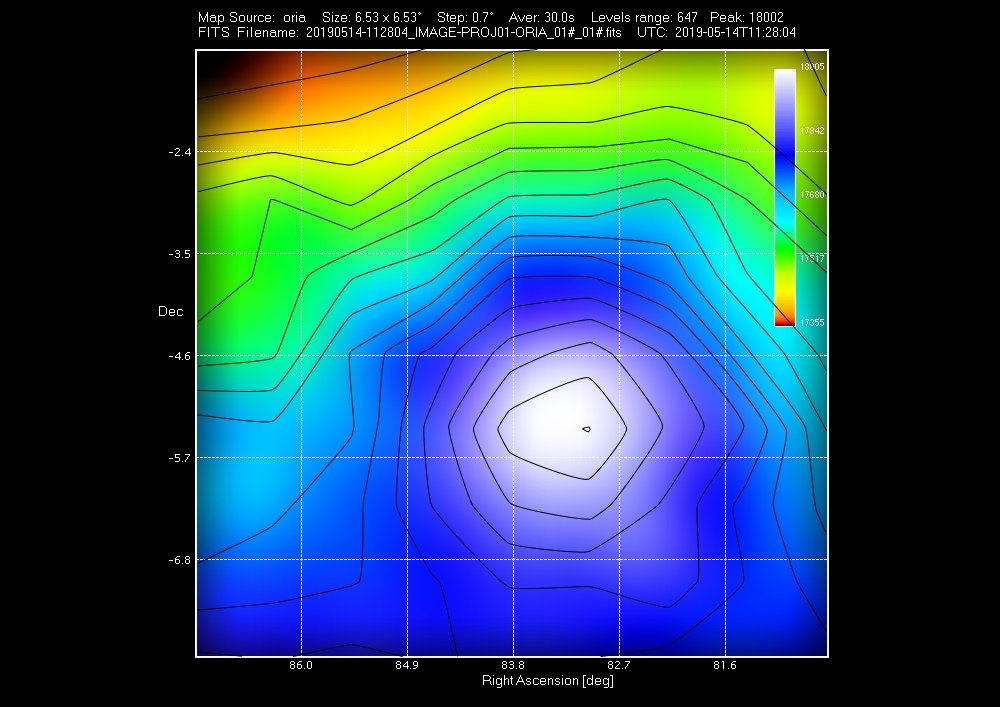
Orion A mapped with the SPIDER 500A radio telescope in Sharjah: the 5×5 degrees map of Orion A recorded by the SPIDER 500A radio telescope.
This Orion A map is a great result for the SPIDER 500A radio telescope installed in Sharjah Center for Astronomy & Space Sciences and it confirms the high sensitivity of the entire system that allows everyone to make real radio astronomy with a complete and easy to use radio telescope. Radio2Space team with Professor Ilias Fernini and Issam S. Abujami decided to take a group picture, with the result of this great first light!
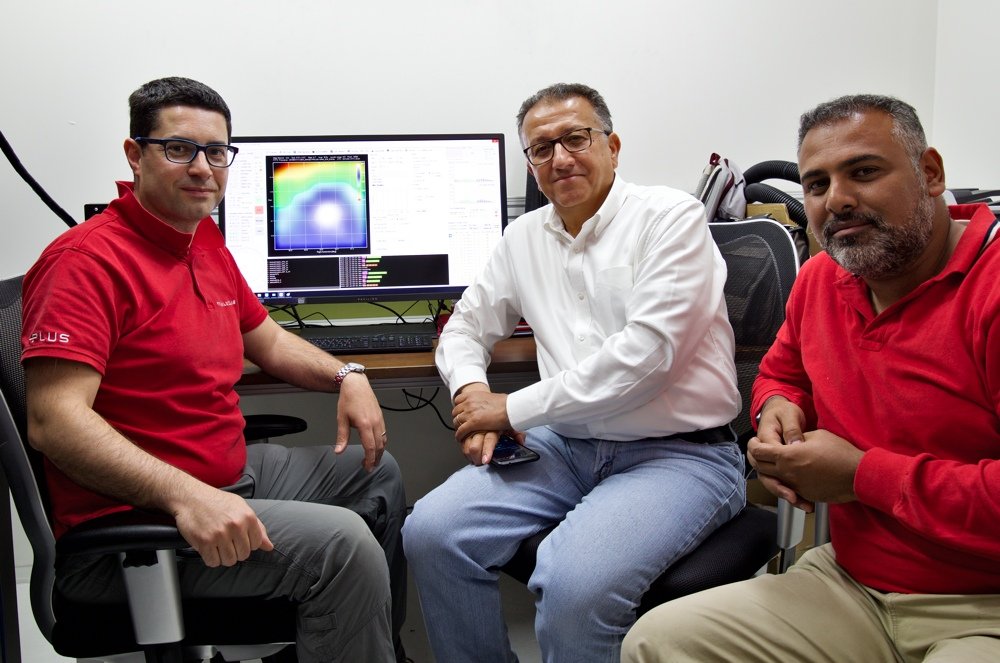
Orion A mapped with the SPIDER 500A radio telescope in Sharjah: Filippo Bradaschia (left) with Professor Ilias Fernini (center) and Issam S. Abujami (right) after the first light acquisition.
